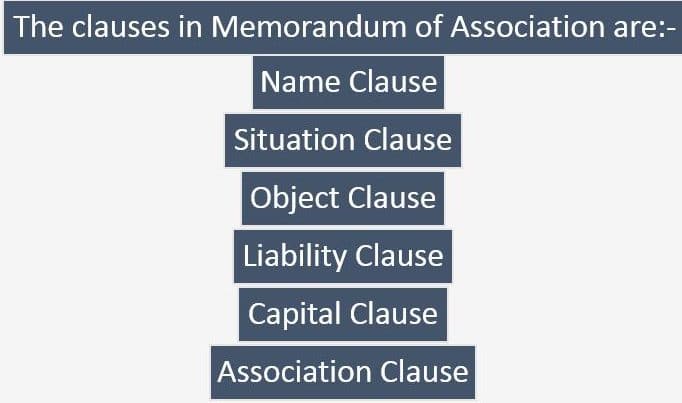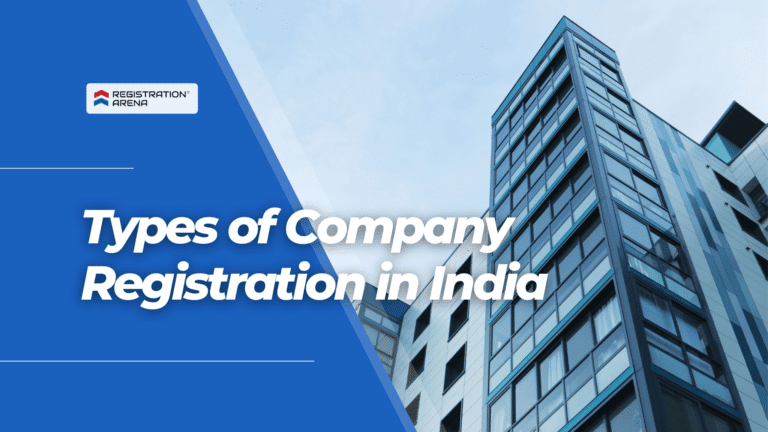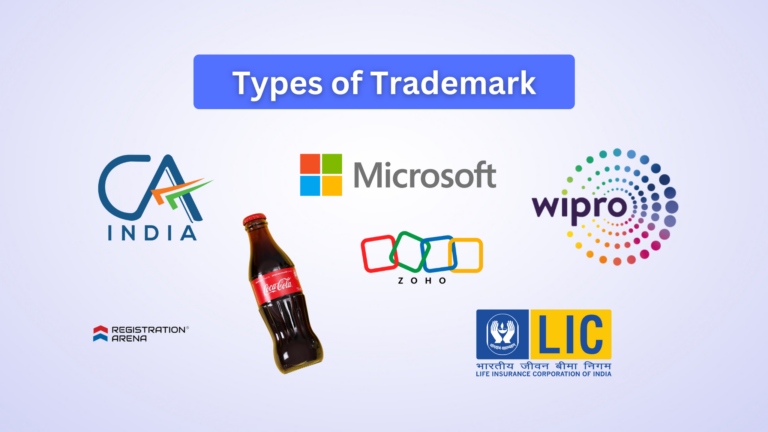MoA and AoA are two very important documents for a company. They are the founding documents and dictate the powers of a company, specifics of management and lay down its foundation. It is important that we look at the two documents individually before answering the question “What is the difference between MoA and AoA?”
MOA
MoA stands for Memorandum of Association. It is commonly referred to as memorandum. The MoA of a company defines powers, scope and constitution of the company. It states what a company can do and that which lies outside of its domain. This document defines the objective of the company, i.e., the reason it has been founded. It is a public document.
There are numerous MoA types depending on the company (Limited/Unlimited, Having/Not having a share capital, etc.) and each MoA has a number of clauses with each clause defining a certain aspect of the company.
The contents of MoA are-
Name Clause
This contains the name under which the company would conduct its business. It is important to note that the name of the company should not be similar to any other existing company. It is stated here whether or not the company is limited.
In case of a Private Limited Company, the name of the company has to be followed by the words ‘private limited’ (abbreviated and written as Pvt. Ltd. Co.).
In case of a Public Limited Company, the name of the company has to be followed by the word ‘limited’ (abbreviated and written as Ltd.).
Companies incorporated under Section 8 of the Companies Act, follow a different nomenclature. These companies depending on their business use different terms such as Association, Federation, Foundation, etc.
Office/Situation Clause
This clause specifies the state in which the company’s registered office lies so as to determine under whose authority it lies.
Object Clause
It contains the objective of the company (the reason behind its incorporation).
- Main objective- It dictates the main business of the company
- Incidental/Ancillary objective – They are sub-objectives required to facilitate the achievements of the main objectives.
- Other objectives- Objectives apart from Main objective and Incidental objective
Liability Clause
This clause features the individual liability of the company’s members. This clause differs company to company depending on whether or not they are limited companies.
Limited Companies – The liability of the members is limited to the unpaid face value of the owned shares.
Unlimited Companies – The liability of the members is unlimited which means that the personal assets of the members can be used to meet the debts of the company.
Companies limited by guarantee – This combines the features of both a limited and an unlimited company. The members are liable to pay the unpaid face value of the share as well as the guaranteed amount they undertook the liability of in the MoA.
Capital Clause
This clause is valid for companies having share capital. It contains the maximum capital that a company can raise (authorized capital) and the issued capital of the company. The assets owned by the company are also stated here.
Association Clause
This is the final clause and specifies the subscriber’s intent on forming the company. It confirms that the members are willingly taking the decision to associate and incorporate a company. It contains the names, addresses and other details of company’s subscribers.
The Memorandum form comes in different tables with each table having a different purpose
Table A – MOA of a company limited by shares
Table B – MOA of a company limited by guarantee and not having share capital
Table C – MOA of a company limited by guarantee and having share capital
Table D – MOA of an unlimited company and not having share capital
Table E – MOA of an unlimited company and having share capital

AOA
AoA stands for Articles of Association. It defines the purpose for the company’s existence and details the internal working & the management of the company. It provides a framework which states how the company conducts its day to day activities. They detail the company’s conduct while issuing shares, paying dividends, auditing, providing voting rights. It is in agreement with the MoA and does not contain anything that goes against it. AoA is similar to a Partnership Deed.
It contains the interpretation of the terms used in the articles, followed by details regarding the share capital, calls on shares, transfer of shares and share forfeiture. Following this, it features information regarding general meetings, proceedings, adjournment of such meetings and voting rights of the members. It features clauses relating to the board of directors, chief personnel of the company, payment of dividends and winding up of the company.
It contains details regarding-
- Company Name
- Purpose of the Company
- Share Capital – The voting rights of shares, the number of shares and the types.
- Board of Directors – Their appointment, powers, responsibilities etc.
- General Meetings
- Organization of the Company
This section contains the information relating to the members of the company. It features the address, identity etc. of all the founding members and shareholders along with the number of directors and shareholders of the company.
- Shareholders Meetings
It is important to know that Articles of Association can be altered by the company by passing a special resolution.
Similar to a MoA, The AoA form also comes in different tables with each table having a different purpose:
Table F – AOA of a company limited by shares
Table G – AOA of a company limited by guarantee and having share capital
Table H – AOA of a company limited by guarantee and not having share capital
Table I – AOA of an unlimited company and having share capital
Table J – AOA of an unlimited company and not having share capital

What is the difference between MoA and AoA?
| Ground of Distinction | Memorandum of Association (MoA) | Articles of Association (AoA) |
| Purpose | It defines the objective and the powers of the company. | It defines the process to achieve the objective and execute the power. |
| Contents | It has six compulsory clauses | Its contents rely on the company. |
| Importance | It is a mandatory document | It is not mandatory. |
| Filing | MoA is filed at the time of incorporation | It is optional to file it at the time of incorporation |
| Superiority | It is the most important document for a company. | AoA is inferior to MoA and so it is prepared in accordance with the MoA. Anything that it contains which goes out of the bounds defined by the MoA will be declared null and void |
| Amendment | MoA cannot be amended | AoA can be amended |
| Concerned Section of Companies Act, 2013 | Section 2(56) | Section 2(5) |
Conclusion
Both the MoA as well as the AoA are important documents for the company and it is even more important to understand them in their respective regards and also to know the difference between the two. The two may seem similar to an untrained eye but they are very different in almost every regard.







